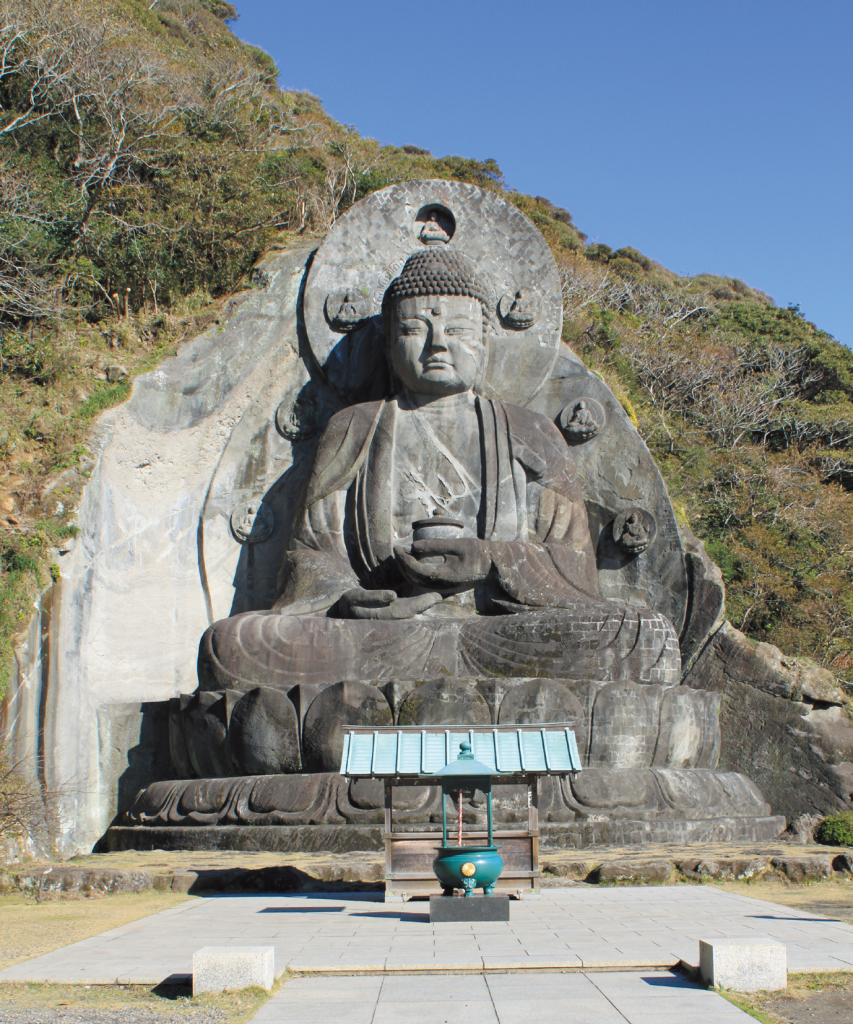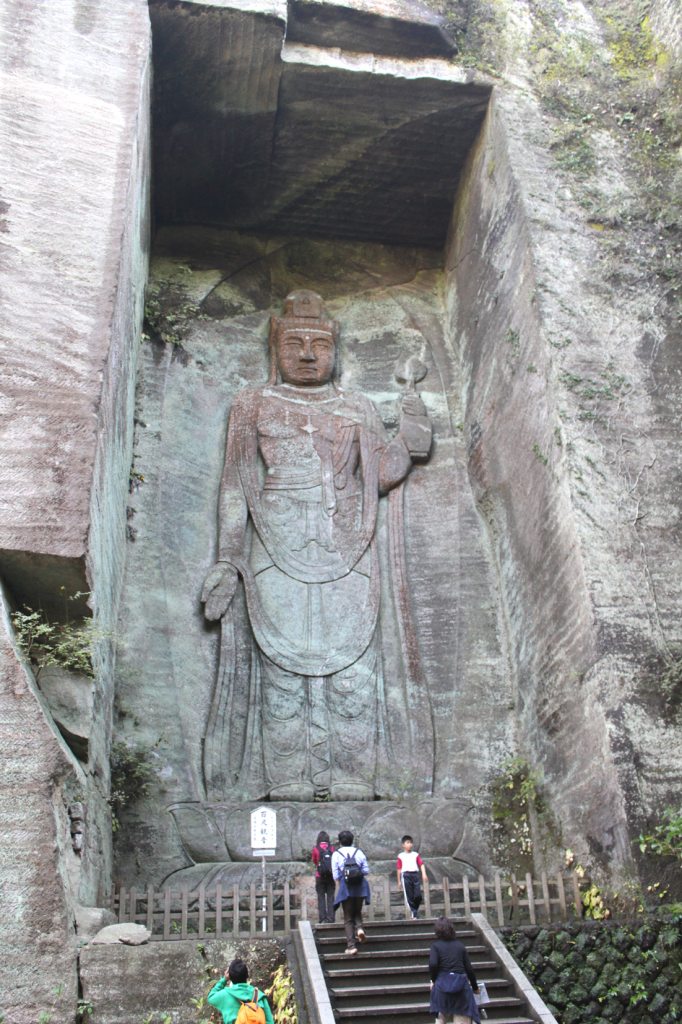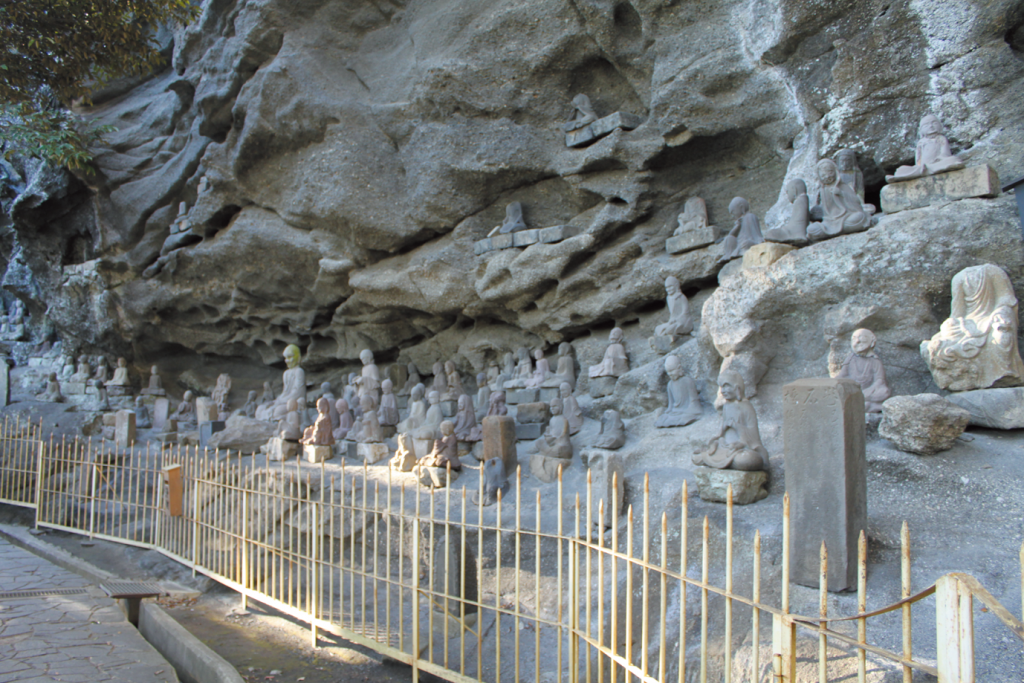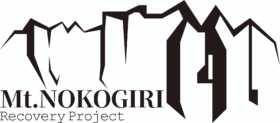鋸山の南側斜面(保田側)約10万坪は、日本寺の境内となっています。
大仏様、百尺観音像、千五百羅漢石像群などを見学しながら、鋸山を楽しめます。
拝観時間
8:00〜17:00
冬期は暗くなるのが早いので、早めの拝観をお勧めします。
拝観料
大人 700円
小人( 4〜12歳)400円
5箇所のどの管理所からの入場の場合でも、一度拝観料を支払えば、当日に限り再入場可能です。
境内案内・みどころ
日本寺のサイトの案内図をご覧ください。
大仏広場近くにはトイレがあります。また、大仏広場には、飲み物の自動販売機と休憩できるベンチがあります。
日本寺の由来
山号は、乾坤山(けんこんざん)遡ること約1300年、日本寺は聖武天皇の勅願により、行基(ぎょうき/ぎょうぎ 奈良時代の僧)によって神亀2年(725年)に開かれたそうです。日本寺は、初めは法相宗、天台宗、真言宗を経て、江戸幕府三代将軍徳川家光の治世に曹洞宗となりました。かつては七堂十ニ院百坊をもち、良弁、空海、円仁らが訪れ修行したそうです。また境内にある大蘇鉄は、源頼朝が、日本寺で再起の際の武運を祈願し、自ら手植えしたと伝えられています。頼朝蘇鉄と呼ばれ、樹齢800年を超えるそうです。日本寺は隆盛を経て、美しい自然とともに、長い歴史を現在に伝えています。
The sango is Kenkon-zan.About 1300 years ago, Nihon-ji temple wascreated by Imperial order of the Emperor SHOMU and high priest Bodhisattva GYOKI founded it in 725. At first Nihon-ji temple was the HOSSO Sect, Then converted to the TENDAI Sect, the SHINGON Sect, and under the reign of Iemitsu, the third Tokugawa shogun, converted to SOTO Zen Sect. Once this temple consisted of seven shrine, twelve monastic houses, and one hundred lodges for priests. It is said ROBEN, KUKAI and ENNIN practiced here. In addition, a big cycad in the precincts was planted personally by MINAMOTO NO YORITOMO to wish the good fortune of revival at Nihon-ji Temple. It is called a Yoritomo sotetsu and it is over eight hundred years old. Nihon-ji temple has gone through various incidents and has been showing us its long history together with the beautiful natural surrounding.
大仏 薬師瑠璃光如来 The official name of DAIBUTSU is “Yakushi-Ruriko-nyorai”

大仏さまの正式名称は「薬師瑠璃光如来」。
瑠璃光と呼ぶところが美しい響きで、鋸南町の自然の美しさとなおいっそう重なります。
当時は江戸時代の天明3年(1783年)。現在の木更津市にあたる上総桜井の名工大野甚五郎英令が、門弟27名と岩壁を彫刻し、3年かけて完成したと伝えられています。歴史的な出来事では、天明の飢饉の頃、そして浅間山の大噴火のあった年です。
The official name of DAIBUTSU is “Yakushi-Ruriko-nyorai”. Pronunciation “RURIKO” sounds beautiful and overlaps with natural beauty of Kyonan town. In 1783, Edo period, a master craftman Jingoro Eirei Ohno who lived in Kazusa Sakurai (now Kisarazu city), caved a DAIBUTSU on the rock face with his 27 apprentices and it took three years to complete. Looking back the historical incident, Tenmei famine and volcanic eruption of Mt. Asama took place then. The DAIBUTSU was about 37.7 meters high and bigger than the present one. How huge it was! I feel that its huge size showed how deeply people thought of the DAIBUTSU at that time. I wonder what made people decide to build the DAIBUTSU. My imagination becomes bigger and bigger. However the DAIBUTSU was exposed to wind and rain. So by the end of Edo period, its collapse worsened considerably. I hear it had been left as it was until restoration started in 1966. It took four years to restore and the DAIBUTSU came back brilliantly in 1969. The RURIKO DAIBUTSU is a symbol of the world peace. There were not only peaceful time but also war and calamity time. Though the DAIBUTSU was drawn into the vortex of war and calamity and many years elapsed before restoration, he will keep watching us from Mt. Nokogiri forever.
百尺観音 Hyakushaku-kannon

昭和41年(1966年)、約6年をかけて完成した大観音石像です。交通安全の守り本尊として多くの人々に崇められています。
The big stone kannon built in 1966, it took 6 years to complete, is worshiped to save people.
東海千五百羅漢 Tokai Sengohyaku-rakan

安永8年(1779年)から寛政10年(1798年)の前後21年をかけ、大野甚五郎英令が門弟27名とともに生涯をかけて、1553体の石仏を刻みました。西国観音、百躰観音、維摩窟、弘法大師護摩窟など、洞窟に安置されている石仏像です。
From 1779 to 1789, Jingoro Eirei Ono and his 27 apprentices curved 1553 stone Buddhas whole their lives. Saigoku-kannon, Hyakutai-kannon and etc are enshrined.
出典:https://umiikoyamaiko.blogspot.jp/
2019年9月の台風15号の影響で、一部通行禁止箇所がありますので、ご注意ください。
